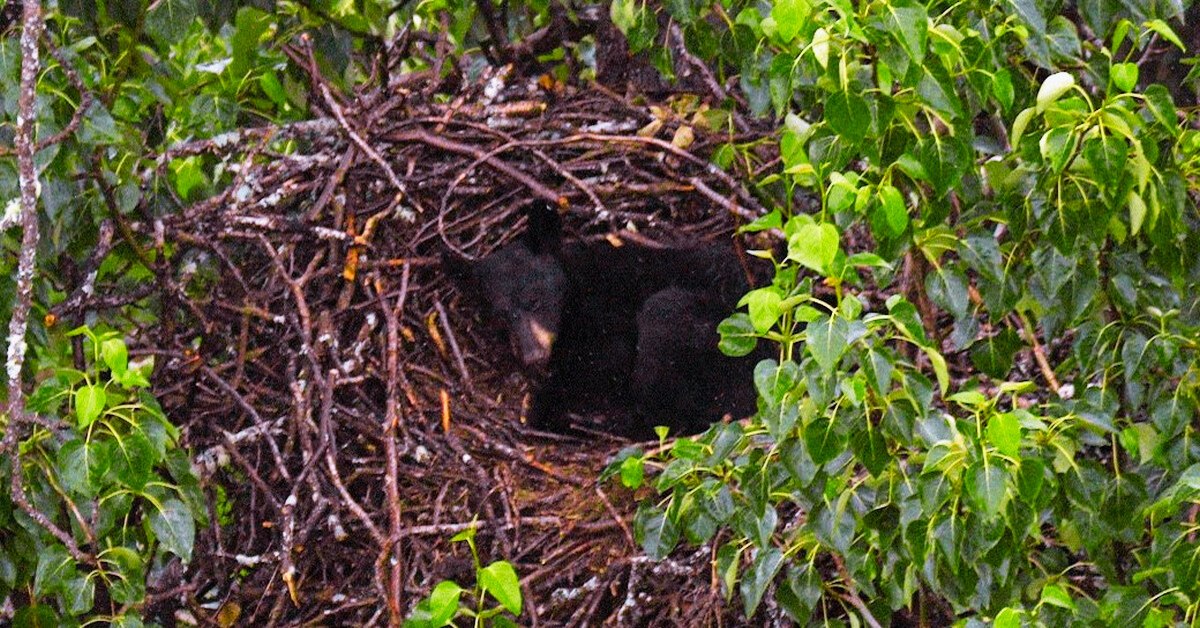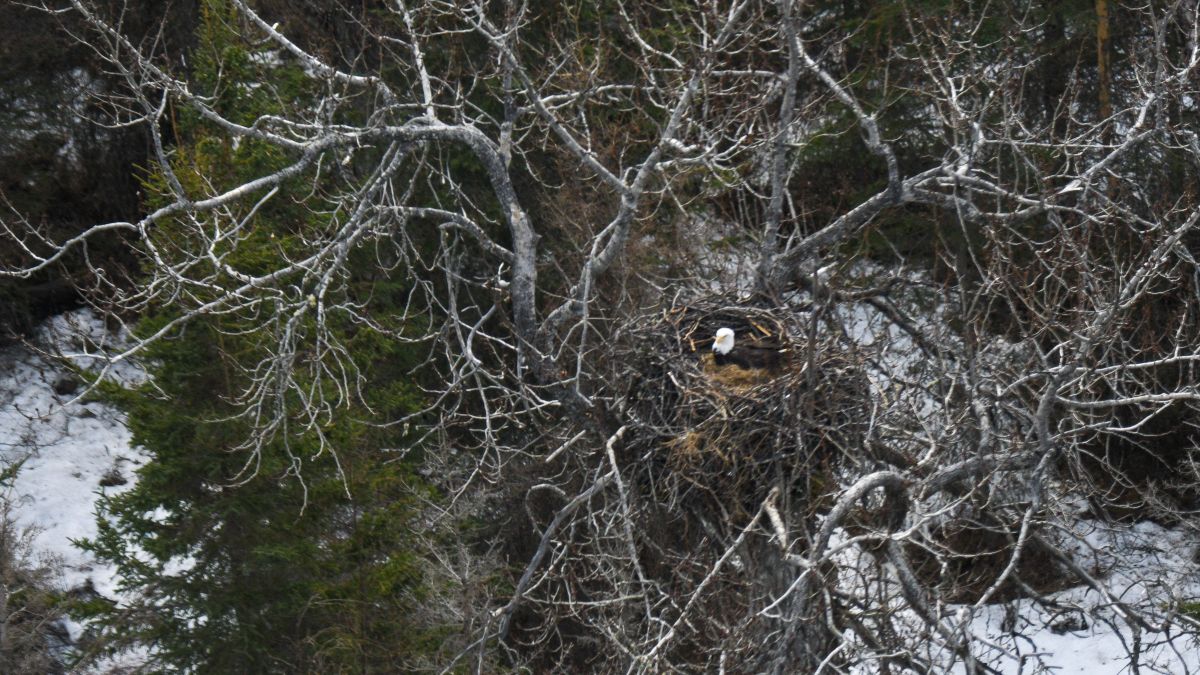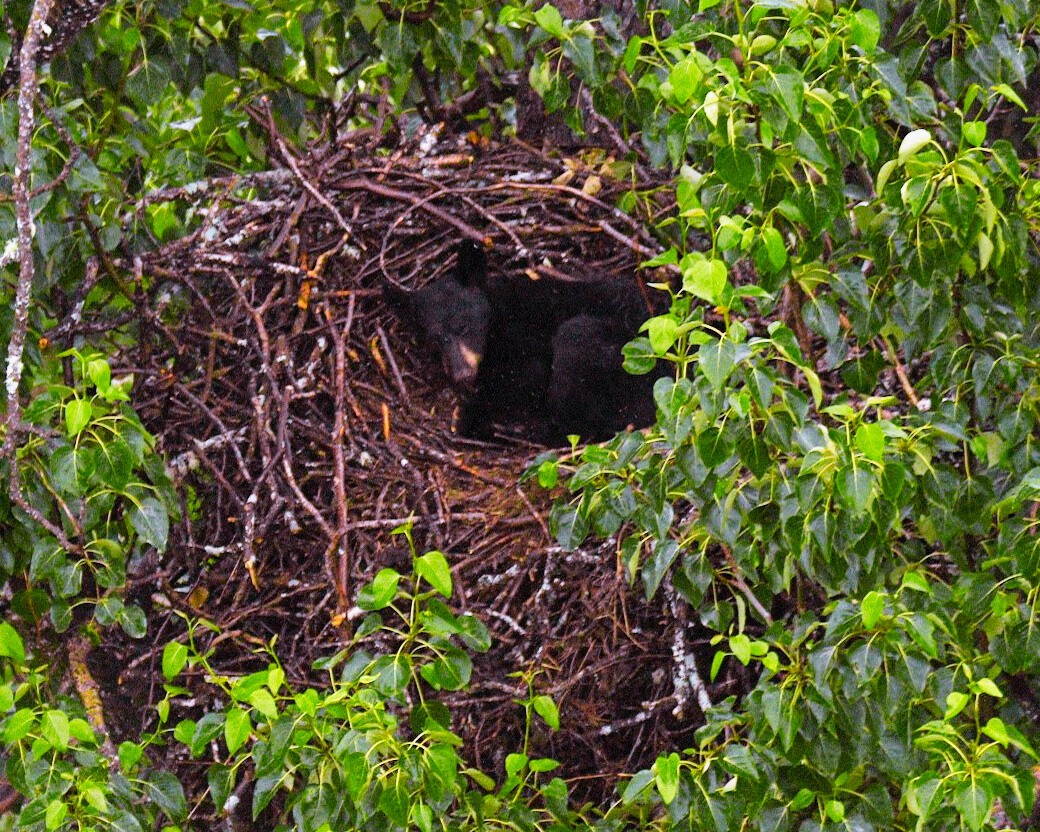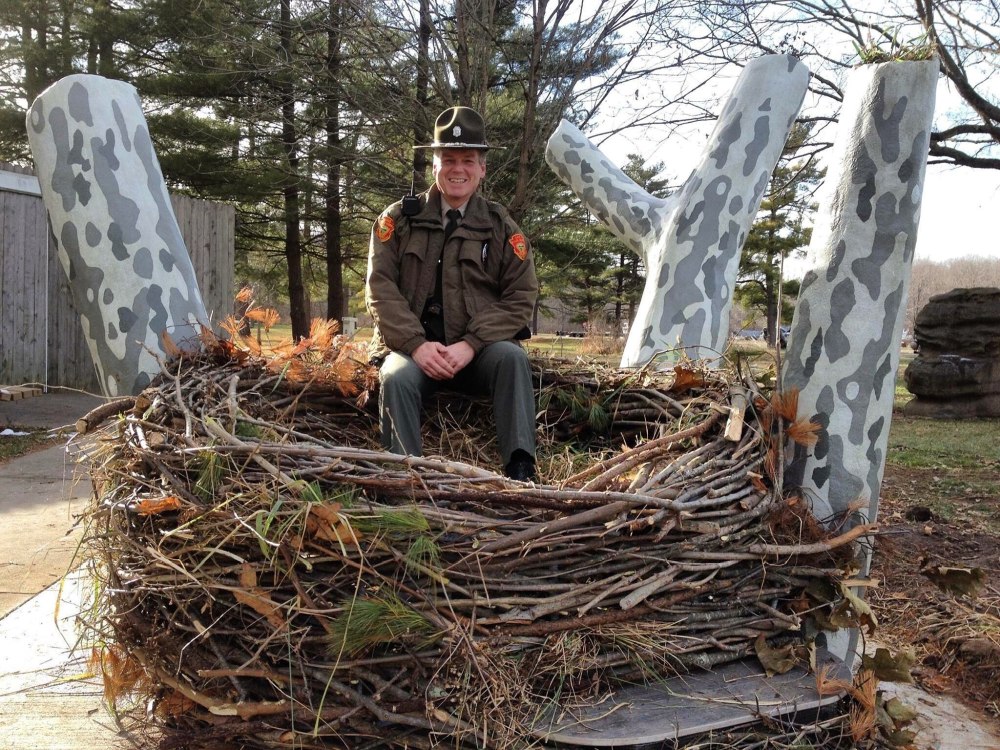
If you ever wondered what bears do when they are not busy raiding trash cans or fishing for salmon, you might be surprised to learn that they sometimes like to take a nap in a cozy nest. But not just any nest. A nest that belongs to a bald eagle, the national symbol of the United States and one of the most majestic birds of prey in the world.
That’s what researchers from the U.S. Fish and Wildlife Service (FWS) discovered while conducting aerial surveys of eagle nests on a military base in Alaska. They spotted a black bear (Ursus americanus) snoozing in a huge nest that was previously occupied by a pair of bald eagles (Haliaeetus leucocephalus). The bear seemed to be enjoying its slumber, oblivious to the fact that it was trespassing on an eagle’s territory.
How did the bear end up in the nest? And what happened to the eagles and their egg? These are some of the questions that the researchers tried to answer, using their observations and knowledge of the wildlife in the area.
 In May, while conducting a helicopter survey, a female bird was found incubating an egg in the nest that was later taken over by the drowsy bear. Image credit: U.S. Fish and Wildlife Service (Cayley Elsik, JBER Environmental Conservation)
In May, while conducting a helicopter survey, a female bird was found incubating an egg in the nest that was later taken over by the drowsy bear. Image credit: U.S. Fish and Wildlife Service (Cayley Elsik, JBER Environmental Conservation)
According to FWS wildlife biologist Stephen B. Lewis, who led the surveys, black bears are known to occasionally invade eagle nests and eat their eggs and nestlings. This can have a negative impact on the local population of eagles, which are protected by federal law and considered a species of conservation concern in Alaska.
“It’s hard to say how much bears invade eagle nests because we don’t (can’t) spend that much time monitoring to see it happen or have cameras to witness it,” Lewis told Live Science in an email.
In this case, however, Lewis suspects that the nest invasion happened after the eagles had already abandoned their nesting attempt. He explained that in May, he saw a female eagle incubating an egg on the same nest, while her mate was perched nearby. A week later, he saw both eagles away from the nest, leaving the egg exposed to the cold.
“It wasn’t clear if the nesting attempt had failed or if the female was just taking a break from incubating,” Lewis said, adding that males would usually take over from females to keep the egg warm, especially in cool places like Alaska.
 Researchers surveying eagle nests discovered a black bear (Ursus americanus) sleeping in one of them. Image credit: U.S. Fish and Wildlife Service (Cayley Elsik, JBER Environmental Conservation)
Researchers surveying eagle nests discovered a black bear (Ursus americanus) sleeping in one of them. Image credit: U.S. Fish and Wildlife Service (Cayley Elsik, JBER Environmental Conservation)
Lewis thinks that the egg was either infertile or damaged by predators or weather, and that the eagles gave up on it sometime in the spring. He said that he did not see any signs of predation or disturbance on the nest when he saw the bear in July.
So why did the bear choose to sleep in an eagle’s nest? Lewis said that it could have been a matter of convenience or curiosity. Black bears usually make their own beds on steep slopes where they are less likely to be disturbed by other animals. But sometimes they may explore other options, such as hollow trees, caves, or even human structures.
“This nest isn’t that far off from such a bear bed. It could have just happened to climb the tree and decided to take a nap,” Lewis said.
Bald eagles are known for building massive nests that can measure up to 8 feet (2.4 meters) across and weigh more than two tons (1.8 metric tons). They use sticks, branches, moss, grass, and other materials to construct their nests, which they often reuse and enlarge year after year. They usually build their nests on tall trees near water sources, where they can hunt for fish and other prey.
 Model of an average-sized – 6 feet wide and 3 feet deep – bald eagle nest on display at Hueston Woods State Park, Ohio. Park ranger for scale. Image credit: Ohio Department of Natural Resources
Model of an average-sized – 6 feet wide and 3 feet deep – bald eagle nest on display at Hueston Woods State Park, Ohio. Park ranger for scale. Image credit: Ohio Department of Natural Resources
Bald eagles are Alaska’s largest resident birds of prey and have wingspans of around 7.5 feet (2.3 meters). They are also very powerful and territorial, and will defend their nests from intruders. However, they are not immune to threats from other predators, such as bears, wolves, ravens, crows, gulls, and owls.
Lewis said that he does not know if the bear will return to the nest or if the eagles will try to reclaim it next year. He said that he plans to continue monitoring the nest and other eagle nests on Joint Base Elmendorf-Richardson (JBER), where he works with military personnel and contractors to protect and conserve wildlife habitat.





